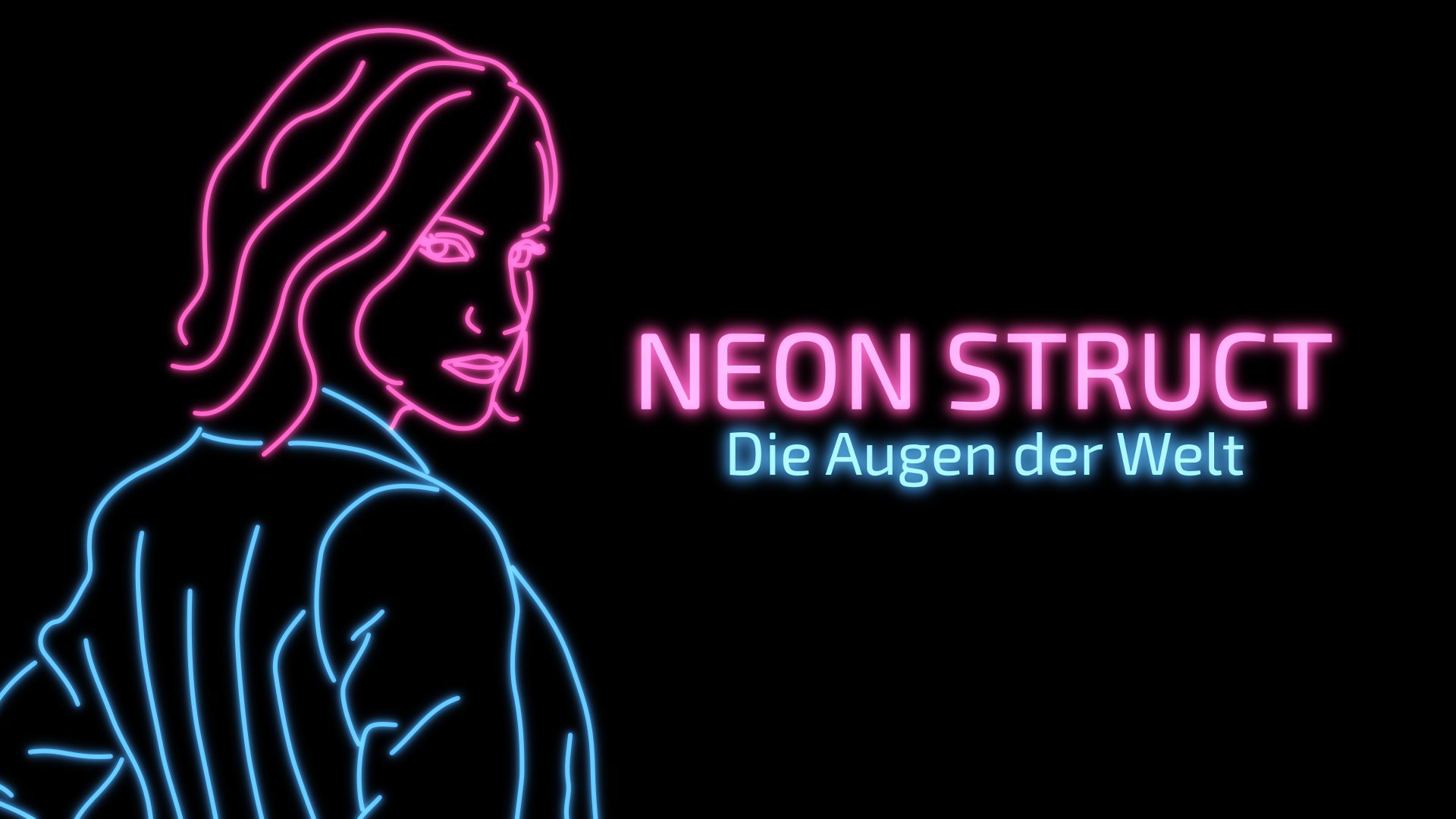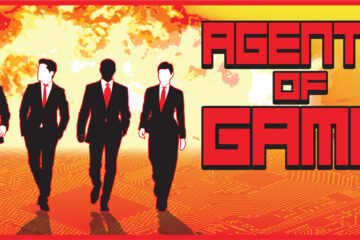Neon Struct – Full Review
 With so many blockbuster games on the market, sometimes it becomes very easy to forget that there are solid independent developers working out there. Not only are many of them making good games, but often, they are making games that would never get the green-light from a major publisher. Even Sega, despite exceeding their own sales forecasts, felt like selling more than two million copies of a recent game was a letdown. If publishers don’t believe it will be a massive success, they are quite likely to pass on some excellent ideas for games. Games like Neon Struct, which released today for Windows, Mac, Linux and SteamOS.
With so many blockbuster games on the market, sometimes it becomes very easy to forget that there are solid independent developers working out there. Not only are many of them making good games, but often, they are making games that would never get the green-light from a major publisher. Even Sega, despite exceeding their own sales forecasts, felt like selling more than two million copies of a recent game was a letdown. If publishers don’t believe it will be a massive success, they are quite likely to pass on some excellent ideas for games. Games like Neon Struct, which released today for Windows, Mac, Linux and SteamOS.
Neon Struct is a stealthy futuristic game of international intrigue, a little bit similar to how you might imagine Perfect Dark sans guns. The game’s creator, David Pittman, noted “NEON STRUCT is an adventure story, set in an alternate history world with a deliberately 1980s sci-fi vibe. (‘2015 as envisioned in 1985’ was how I described it at inception.)” (David Pittman – via Dev Blog). It’s one thing to merely describe the game that way, but when you see the finished product, the neon streets, the artificial trees, the technology they use, you think Pittman really pulled it off. And then the music (performed by The Home Conversion) comes on, and absolutely sucks you in. At least that’s how I felt, as a child of the ’80. I can’t say the rising generation of culture-deprived young’uns would feel. I imagine they’d feel pretty awesome being immersed in that, even if they wouldn’t understand why.
 Now where were we? Oh, yes. In Neon Struct, you play as a secret agent, Jillian Cleary, who through the course of the game learns a bit too much for her own good. Not only do you have to complete your missions in secrecy, but once you’ve been framed for treason, and your former employers bring the full weight of the agency after you, things get a bit dicey. Throughout the game, you have to figure out who you can trust, and how to get the information you need without throwing up red flags. These aren’t just basic game mechanics that were scripted in the game. Your decisions don’t only impact what happens immediately, but also how the rest of the game plays out. Trust the wrong people, and you might have a full squad of agents waiting for you at your next objective.
Now where were we? Oh, yes. In Neon Struct, you play as a secret agent, Jillian Cleary, who through the course of the game learns a bit too much for her own good. Not only do you have to complete your missions in secrecy, but once you’ve been framed for treason, and your former employers bring the full weight of the agency after you, things get a bit dicey. Throughout the game, you have to figure out who you can trust, and how to get the information you need without throwing up red flags. These aren’t just basic game mechanics that were scripted in the game. Your decisions don’t only impact what happens immediately, but also how the rest of the game plays out. Trust the wrong people, and you might have a full squad of agents waiting for you at your next objective.
As you progress through the game, you’ll probably notice a great amount of attention to detail. Over time, more agents fill the streets, who are later joined by aerial drones, and mechs reminiscent of the AT-STs from Star Wars. There are also many optional bits and bobs to discover throughout the game. The obvious ones are geocaches, spread throughout the whole level, which serve as part of your end-level grade (don’t worry, even if you skip those, or “violate” other goals, you’ll still be able to progress just fine). There are also random strangers spread throughout the game, each of which shares a different cryptic message, news monitors and all sorts of other odds and ends. It’s easy to miss many of these, and you aren’t officially penalized for doing so, but you might miss out on some fun little tidbits. On a side note, my favorite was a news reference to an event in Lincoln, Nebraska, my hometown, and also where both Pittman brothers (the founders of Minor Key Games) earned their bachelor’s degrees.
 While you can play the game with a keyboard and mouse, it also offers support for Xbox controllers (and, I imagine, similar gamepads). I found it much easier to avoid detection, and, in the event that failed, escape from guards using a controller than the keyboard. Even having said that, the game was more challenging than I anticipated (which isn’t a bad thing). As you progress, you can find tools and power-ups which also help make it easier, by incapacitating enemies, restoring health, increasing your stealthiness, and so forth. If you are still having a hard time (or are finding it too easy), there are five difficulty levels, so you can adjust it as needed.
While you can play the game with a keyboard and mouse, it also offers support for Xbox controllers (and, I imagine, similar gamepads). I found it much easier to avoid detection, and, in the event that failed, escape from guards using a controller than the keyboard. Even having said that, the game was more challenging than I anticipated (which isn’t a bad thing). As you progress, you can find tools and power-ups which also help make it easier, by incapacitating enemies, restoring health, increasing your stealthiness, and so forth. If you are still having a hard time (or are finding it too easy), there are five difficulty levels, so you can adjust it as needed.
As much as I loved this game (I loved it this much), it isn’t without its flaws. Initially, when you get in the game, it’s very easy to feel a bit lost (part of this was due to what I felt were somewhat counter-intuitive controls for the keyboard, but made easier with a controller). Sure, if you’re using the keyboard, there is the traditional w-a-s-d movement, but controls for other abilities seemed…unexpectedly placed. Not only that, but the tutorial wasn’t particularly explicit in what I was supposed to be doing. Let’s just say that on the first level I died. More times than I care to admit, especially before I discovered that you can actually run away from guards who spot you.
 Also, in contrast to many modern games, there isn’t a forced linear path. The map is a map, and your job is to explore the area, find what you need, do what you must, and get out. There isn’t a narrow corridor to walk through, taking away all the guesswork. I personally am terrible at learning maps, so this made it a bit difficult at times, but I was never “lost” for too long. Don’t necessarily take that as a complaint, however. Although I freely admit that feature was challenging, it was nice to have the freedom to roam, and to try to figure things out for myself.
Also, in contrast to many modern games, there isn’t a forced linear path. The map is a map, and your job is to explore the area, find what you need, do what you must, and get out. There isn’t a narrow corridor to walk through, taking away all the guesswork. I personally am terrible at learning maps, so this made it a bit difficult at times, but I was never “lost” for too long. Don’t necessarily take that as a complaint, however. Although I freely admit that feature was challenging, it was nice to have the freedom to roam, and to try to figure things out for myself.
THE VERDICT:
As I said before, I think Neon Struct is great. While it’s certainly not perfect, and has some notable issues and challenges, this is a game that I, personally, think most people would enjoy quite a bit. If you’re someone who insists on stellar graphics, or who has a hard time playing anything that’s not spelled COD, then this game definitely is NOT for you. For everyone else, I absolutely feel that the game is worth your time and your money. And if you’re not sure, give the demo a spin, or shoot me a message if you’d like to talk about it.
We give this game seventeen cumquats!



